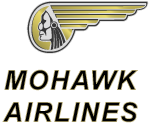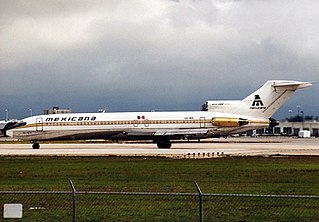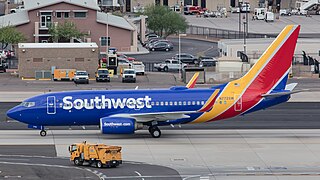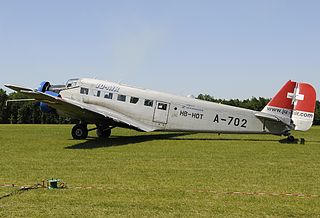
The Federal Aviation Administration (FAA) is a U.S. federal government agency within the U.S. Department of Transportation which regulates civil aviation in the United States and surrounding international waters. Its powers include air traffic control, certification of personnel and aircraft, setting standards for airports, and protection of U.S. assets during the launch or re-entry of commercial space vehicles, powers over neighboring international waters were delegated to the FAA by authority of the International Civil Aviation Organization.

An aviation accident is defined by the Convention on International Civil Aviation Annex 13 as an occurrence associated with the operation of an aircraft, which takes place from the time any person boards the aircraft with the intention of flight until all such persons have disembarked, and in which (a) a person is fatally or seriously injured, (b) the aircraft sustains significant damage or structural failure, or (c) the aircraft goes missing or becomes completely inaccessible. Annex 13 defines an aviation incident as an occurrence, other than an accident, associated with the operation of an aircraft that affects or could affect the safety of operation.

Turkish Airlines Flight 981 (TK981/THY981) was a scheduled flight from Istanbul Yeşilköy Airport to London Heathrow Airport, with an intermediate stop at Orly Airport in Paris. On 3 March 1974, the McDonnell Douglas DC-10 operating the flight crashed into the Ermenonville Forest, 37.76 kilometres (23.46 mi) outside Paris, killing all 335 passengers, and 11 crew on board. The crash was also known as the Ermenonville air disaster. Flight 981 was the deadliest plane crash in aviation history until 27 March 1977, when 583 people died in the collision of two Boeing 747s in Tenerife. It remains the deadliest single-aircraft accident without survivors, the second hull loss and the deadliest accident involving the McDonnell Douglas DC-10, and the deadliest aviation accident to occur in France.

The BAC One-Eleven is an early jet airliner produced by the British Aircraft Corporation (BAC). Originally conceived by Hunting Aircraft as a 30-seat jet, before its merger into BAC in 1960, it was launched as an 80-seat airliner with a British United Airways order on 9 May 1961. The prototype conducted its maiden flight on 20 August 1963, and it was first delivered to its launch customer on 22 January 1965. The 119-seat, stretched 500 series was introduced in 1967. Total production amounted to 244 until 1982 in the United Kingdom and between 1982 and 1989 in Romania where nine Rombac One-Elevens were licence-built by Romaero.

Elmira Corning Regional Airport is in Chemung County, New York, seven miles northwest of Elmira and eight miles east of Corning. It is in the town of Big Flats but its mailing address is Horseheads, New York. The airport was formerly Elmira Regional Airport.

Allegheny Airlines was a regional airline that operated out of Pittsburgh, Pennsylvania, from 1952 to 1979 with routes primarily located in the eastern U.S. It was the forerunner of USAir that was subsequently renamed US Airways, which itself merged with American Airlines. Its headquarters were at Washington National Airport in Arlington County, Virginia.

Mohawk Airlines was a regional passenger airline operating in the Mid-Atlantic region of the United States, mainly in New York and Pennsylvania, from the mid-1940s until its acquisition by Allegheny Airlines in 1972. At its height, it employed over 2,200 personnel and pioneered several aspects of regional airline operations, including being the first airline in the United States to hire an African American flight attendant, in 1958. The airline was based at Ithaca Municipal Airport near Ithaca, New York, until 1958, when it moved to Oneida County Airport in Whitestown, New York.

The Martin 4-0-4 was an American pressurized passenger airliner built by the Glenn L. Martin Company. In addition to airline use initially in the United States, it was used by the United States Coast Guard and United States Navy as the RM-1G.

United Air Lines Flight 297 was a scheduled flight from Newark International Airport to Atlanta that crashed 10 miles (16 km) southwest of Baltimore on November 23, 1962, killing all 17 people on board. An investigation concluded that the aircraft, a Vickers Viscount 745D turboprop airliner, had struck at least two whistling swans, which caused severe damage to the plane, resulting in a loss of control.

Braniff International Airways Flight 250 crashed near Falls City, Nebraska, on August 6, 1966, en route to Omaha from Kansas City, Missouri. Thirty-eight passengers and four crew members were killed in the crash, which occurred in a farm field late on a Saturday night. In-flight structural failure due to extreme turbulence in an avoidable weather hazard was cited as the cause.

Mexicana de Aviación Flight 940, operated by Mexicana de Aviación, was a scheduled international flight from Mexico City to Los Angeles with stopovers in Puerto Vallarta and Mazatlán on March 31, 1986, utilizing a Boeing 727-200 registered as XA-MEM, when the plane crashed into El Carbón, a mountain in the Sierra Madre Occidental mountain range northwest of Mexico City, killing everyone on board. With 167 deaths, the crash of Flight 940 is the deadliest aviation disaster ever to occur on Mexican soil, and the deadliest involving a Boeing 727.

Northwest Airlines Flight 85 was a scheduled international passenger flight from Detroit Metropolitan Wayne County Airport in the United States to Narita International Airport in Japan. On October 9, 2002, while over the Bering Sea, the Boeing 747-400 experienced a lower rudder hardover event, which occurs when an aircraft's rudder deflects to its travel limit without crew input. The 747's hardover gave full left lower rudder, requiring the pilots to use full right upper rudder and right aileron to maintain attitude and course.

On October 29, 2015, Dynamic Airways Flight 405, a Boeing 767 on a scheduled passenger service from Fort Lauderdale, Florida, to Caracas, Venezuela, suffered a fire while taxiing for departure. All 101 passengers and crew evacuated the aircraft and survived, but twenty-two of them were injured.

American Airlines Flight 383 was a scheduled passenger flight from O'Hare International Airport in Chicago, Illinois to Miami International Airport. On October 28, 2016, the Boeing 767-300ER operating the flight suffered an engine fire during takeoff. The crew aborted their takeoff, evacuating everyone on board, of whom 21 were injured. The plane was a write-off.

Southwest Airlines Flight 1380 was a Boeing 737-700 that experienced a contained engine failure in the left CFM International CFM56 engine after departing from New York–LaGuardia Airport en route to Dallas Love Field on April 17, 2018. The engine cowl was broken in the failure, and cowl fragments damaged the fuselage, shattering a cabin window and causing explosive depressurization of the aircraft. Other fragments caused damage to the wing. The crew carried out an emergency descent and diverted to Philadelphia International Airport. One passenger was partially ejected from the aircraft and sustained fatal injuries, while eight other passengers sustained minor injuries. The aircraft was substantially damaged.

On 4 August 2018, a Junkers Ju 52 passenger aircraft operated by Ju-Air crashed near Piz Segnas, Switzerland, while en route from Locarno to Dübendorf. All 20 people on board were killed.

Pan Am Flight 799 was an international cargo flight from Los Angeles International Airport to Cam Ranh Airport in South Vietnam that crashed on December 26, 1968, near Anchorage, Alaska. The aircraft involved was a Boeing 707-321C aircraft operated by Pan American World Airways. All three crew members died in the crash.

The Boeing 737 MAX passenger airliner was grounded worldwide between March 2019 and December 2020 – longer in many jurisdictions – after 346 people died in two similar crashes: Lion Air Flight 610 on October 29, 2018, and Ethiopian Airlines Flight 302 on March 10, 2019. By March 13, 2019, 51 regulators had grounded the plane; by March 18, all 387 of the aircraft in service worldwide were grounded; the U.S. Federal Aviation Administration (FAA) had resisted grounding the aircraft until March 13, when it received evidence showing how similar the accidents were.

Omega Aerial Refueling Services Flight 70 was a flight supposed to provide aerial refueling to US Navy F/A-18 fighter jets. It crashed on take-off following an engine separation.



















